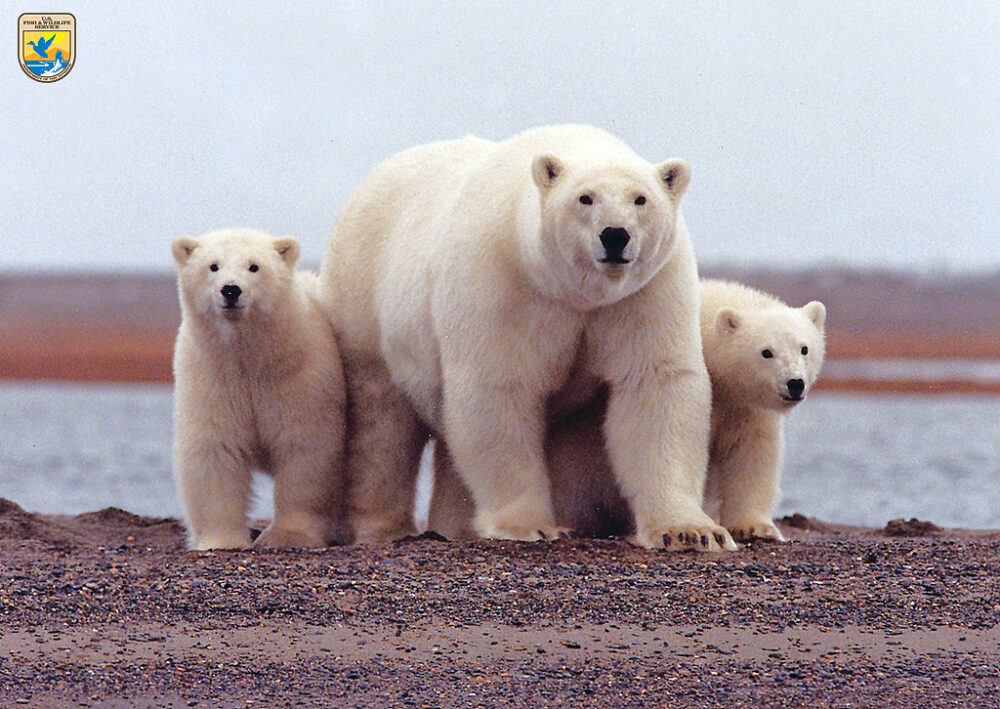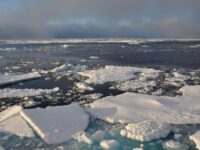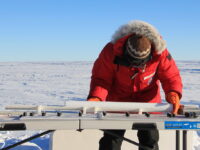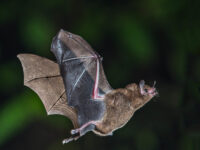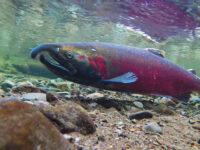If current climate trends persist, the Arctic Ocean is predicted to become seasonally ice-free by the 2030s. Sea ice follows a cyclic pattern, partially melting in the summer and re-forming with the cooler temperatures of autumn and winter. However, rising global temperatures have increased the melting rate and decreased the formation rate. During future summers, the Arctic will soon lack the dazzling ice it is known for.
Ice is invaluable to Arctic marine mammals, serving as a platform for foraging, hunting, birthing, and resting. In response to declining sea ice levels, Arctic species have adapted their behaviors and relationships to survive in changing conditions. Two such species are the polar bear and the ringed seal which are intertwined in an intricate predator-prey relationship.
In response to declining sea ice levels, Arctic species have adapted their behaviors and relationships.
Ringed seals use sea ice to build snow lairs which provide warmth and protection to young pups who lack blubber. Rising Arctic temperatures have caused land-fast ice — or ice attached to land — to virtually disappear during summer and autumn, forcing seals to use calved (broken) ice during these seasons. For polar bears, land-fast ice provides a platform for effectively hunting seals. Seals stationed on calved ice are more difficult targets, requiring a more advanced aquatic “sneak attack” performed by only 20 percent of Norwegian polar bears, according to a study in the Journal of Animal Ecology. Thus, while ringed seals can maintain their current habits in the wake of reduced ice, polar bears have had to adapt their spatial and feeding patterns.
To better understand this modified predator-prey dynamic, the 2017 study from Svalbard, Norway, analyzed polar bear and ringed seal behavior in the altered Arctic landscape. Bears and seals were tracked using biotelemetry devices during two distinct time periods: 2002 through 2004 (before significant ice reduction) and 2010 through 2013 (after ice reduction). The study found that after significant ice reduction, polar bears both moved greater distances in summer and spent less time near tidal glacier fronts. This means that, in the reduced-ice summers of 2010 to 2013, polar bears spent more time and energy searching for food within a narrower geographical range. These results confirmed a decrease in the spatial overlap between the polar bear and ringed seal, illustrating a less intense predator-prey relationship.
Due to the changes in the abundance of different prey species or access to one prey species over another, predators have to make foraging decisions.
Without reliable access to ice platforms for hunting seals, polar bears shifted their hunting strategy to target different prey — namely ground-nesting birds that are abundant and easier to hunt. According to David Kimbro, assistant professor of marine and environmental sciences at Northeastern University, this is a classic example of prey-switching behavior where “due to the changes in the abundance of different prey species or access to one prey species over another, predators have to make foraging decisions.” By successfully finding a new primary food source, polar bears demonstrated their adaptability amidst changing environmental conditions.
While it may seem like both seals and polar bears have adapted during this climate crisis, the two continue to face challenges that threaten their survival. Ringed seals must develop a way to survive once the ice is absent during the summer. The seals are barely clinging on to fractured portions of the frozen beauty that once was, not only fighting to survive against both their predators but also against the more daunting threat of climate change. For polar bears, ground-nesting birds may not be a sustainable long-term option. Kimbro notes that the bears’ new hunting strategy is not energetically favorable, as the bears are traveling longer distances to hunt smaller prey.
While it may seem like both seals and polar bears have adapted during this climate crisis, the two continue to face challenges that threaten their survival.
At this time, it is difficult for researchers to predict long-term outcomes, but ecological theories can provide potential pathways. Ringed seals may adapt, possibly altering their breeding cycles so that pups are only born in colder seasons and thus can still be raised inside warm snow lairs. Similarly, the polar bears can adapt, and perhaps those that have mastered the aquatic “sneak attack” will be selected for. Seals would once again be placed in danger, and a new chain of ecological events would ensue.
These concerns illustrate how the Arctic is an intricate and fragile ecosystem, where ice is a crucial abiotic player whose absence poses a threat to stability. While the outlook for the Arctic can seem bleak, nature is resilient, and the species that survive will be most ecologically fit for the changing environment. Moreover, continued research is a powerful tool, strengthening our collective knowledge so that policies and conservation efforts are scientifically supported. Polar bears and ringed seals have not given up in the face of climate change, and nor should we.
Journal of Animal Ecology (2017). DOI: 10.1111/1365-2656.12685
